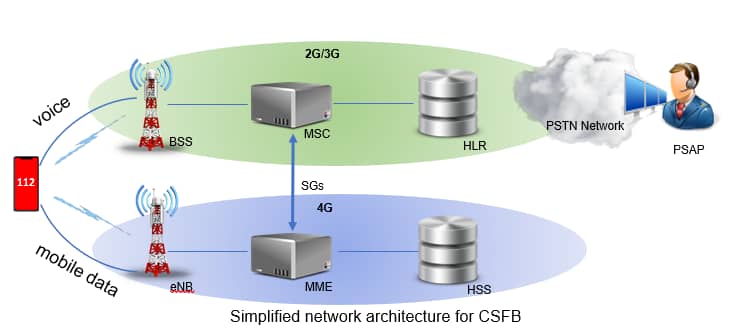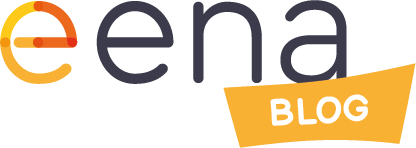The Effects of Circuit Switched FallBack on Emergency Calls
- August 8, 2023
- Categories: Access to emergency services
Note: This document has been created based on recent statistics from the Romanian 112 system and the Romanian legislation.
Obligations for PSAPs and MNOs related to caller identification and location
According to the current legal framework, access to emergency services revolves around number-based interpersonal communication services, which means the caller identity is one of the main attributes of the emergency call. Calling Line Identity (CLI) is the first information the call-takers receive about an emergency. This identity is used even before the call is answered, to retrieve additional information related to the caller from the subscriber database. The caller’s phone number is also used to associate contextual information to the call, like network location or handset-derived location information, but maybe, in the first place, to callback the caller if the call gets disconnected. It is also used to identify registered persons with speech and hearing disabilities.
The importance of the caller identity led to obligations being introduced into the national or European legal frameworks. For example, in the Romanian primary law, there is an obligation for the electronic communications service providers to ensure sending a unique identifier for every emergency communication to the administrator of the emergency system (GEO no. 34/2008, article 15 e.). Also, all electronic communications service providers have the obligation to provide the subscriber databases, containing the unique identifier to the administrator of the emergency system (GEO no. 34/2008, article 18 1.). In fact, article 10 i) of the same law mandates that the 112 call centers have the role to “perform the callback procedures of the final users of the 112 emergency service” – the citizens, according to the operational methodology.
The access to emergency services is also enforced by the secondary legal framework, the Decision of the president of ANCOM (the Romanian NRA) no. 1023/2008 with subsequent amendments, regarding the communications to 112. According to Art. 21 (2) the electronic communications public network providers are required to ensure, without interruption the transfer of all 112 calls to the emergency system, even if the call is originated by the subscriber of a different network.
What is CSFB, from the mobile network perspective
At present, in most European countries, emergency calls are permitted only on 2G/3G networks. So, when a caller registered on a 4G network initiates an emergency call, the subscriber is forced to leave the 4G network and register on a 2G or a 3G network in order to reach the emergency services. This automated mechanism is called CSFB (Circuit Switched FallBack) and it’s used worldwide, wherever there is an LTE service provider that also operates 2G/3G networks and Emergency over LTE is not implemented. CSFB is defined by the 3GPP in a separate specification in ETSI TS 1230272.
For CSFB to work, the User Equipment needs to be attached to both 4G network and to the 2G/3G network. So, when the attach procedure occurs in the 4G network the serving MME notifies the MSC in the 2G/3G network, using the SGs interface. The subscriber information is now stored in both MME and the MSC, and the subscriber mobility information is available in the HSS and in the HLR.

When the emergency call is initiated in the 4G network, the MME instructs the eNodeB to drop the subscriber, which will be sent to the 2G/3G network. The call will be processed normally on this network and it will be routed to the most appropriate PSAP based on the Cell-ID location.
Some effects of the CSFB on the emergency communications
So, at this point, emergency calling may become subject to the constraints imposed by technology and the ramifications of diverse network configurations. Based on statistical data spanning 2021 and 2022, the proportion of emergency calls lacking proper identification increased from 4.66% in 2021 to 4.75% in 2022. But in the first semester of 2023, a growth of 59,6% was registered for this type of calls. This is mainly due to the process of shutting down the 3G networks by some of the MNOs.
To ensure the obligation to transfer all 112 calls to the emergency system, even if the call is originated by the subscriber of a different network, the MNOs associated one or multiple generic numbers to emergency calls from users not registered on their networks. It should be noted that initiating a call back in such circumstances is unfeasible.
The utilization of the same generic identity for simultaneous emergency calls resulted in certain instances in wrong correlation of Cell-Id location information. This predicament was observed within the 112 system in Romania where the network location information is acquired based on an interrogation in a Cell tower database when the call is answered, relying on the calling number.
An additional consequence arising from the utilization of generic identities is the impossibility to match the AML location information, assuming such data is available, for instance, in cases where the User Equipment is registered on a Wi-Fi network. The retrieval of location details from the AML database also relies on querying the Mobile Station International Subscriber Directory Number (MSISDN).
To counter some of this effect, the MNOs were asked to provide the IMSI code instead of the generic numbers. The IMSI (International Mobile Subscriber Identity) is a unique identifier for a subscriber in any mobile network. This identifier is a 14 or 15 digits code that resides on the SIM card and can identify the country (the first 3 digits represent the MCC – Mobile Country Code), the mobile network (the following 2 or 3 digits represent the MNC – Mobile Network Code) and the subscriber (based on the Mobile Identification Number – the last 9-10 digits). This code was also included in the subscriber database made available periodically by the MNOs to the PSAP.
These identifiers are supposed to be used only when the caller’s device was in Limited State Service (or Emergency Calls Only), outside the coverage of the home network. But the analysis of the IMSI codes received versus their associated Cell-Ids revealed that between 20 and 91 percent of the calls, depending on MNO, received with IMSI code identity, were not calls outside their home network coverage, but subscribers calling through their own network.
This could lead to the conclusion that during the CSFB process, when the eNodeB forces the User Equipment to deregister from the 4G network, the 2G network is not aware of the subscriber making the emergency call and delivers it with priority to the emergency system, but without the MSISDN.
This means that, even though transported by the home network, the subscriber doesn’t have access to network services like SMS and data connectivity. This also results in the impossibility to send AML location information using SMS or mobile data, increasing the error rate of AML message transmission. Locating the caller is also not possible using the HTML5 geolocation solution, which relies on the same network services.
What can you do (from the legal and technical perspective) to limit these effects
As the deployment of 5G technology progresses and the market penetration for the 4G/5G compatible devices expands, an increasing number of subscribers will encounter the need to utilize Circuit-Switched Fallback (CSFB) technology for accessing emergency services.
Emergency services can take certain measures with the assistance of the National Regulator and MNOs. One such measure involves requesting MNOs to provide the IMSI code instead of generic identities for emergency calls in Limited State Service. This measure is more effective when the MSISDN-IMSI code correlation is available in a database that the PSAP can use to query when receiving an IMSI call. In such cases, the PSAP can call back using the associated MSISDN if the caller has home network coverage. Additionally, querying the AML database using the IMSI code provides better results for locations received over HTTPS since the device number is often not provided by the OS. These provisions should be incorporated into the national legal framework and enforced by the NRA.
Deploying Emergency over LTE and 5G is the main measure that both the end-users and the emergency systems could benefit from. This measure will no longer require using the CSFB and it will allow sending the call with all associated contextual information. Until that will happen, PSAPs could make a statistical analysis of the caller identity provided by the network and request the MNOs to take any necessary measures, according to the complexity of their network, to reduce the lack of caller identity for subscribers in their own network as the effect of CSFB. From recent figures at the beginning of July 2023, the MNO with the highest value for IMSI calls from its own subscriber performed some network configurations and the percentage dropped from 91% to only 8.71% of calls.

Daniel Rata
- This author does not have any more posts.
Share this blog post on:
